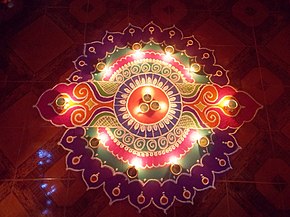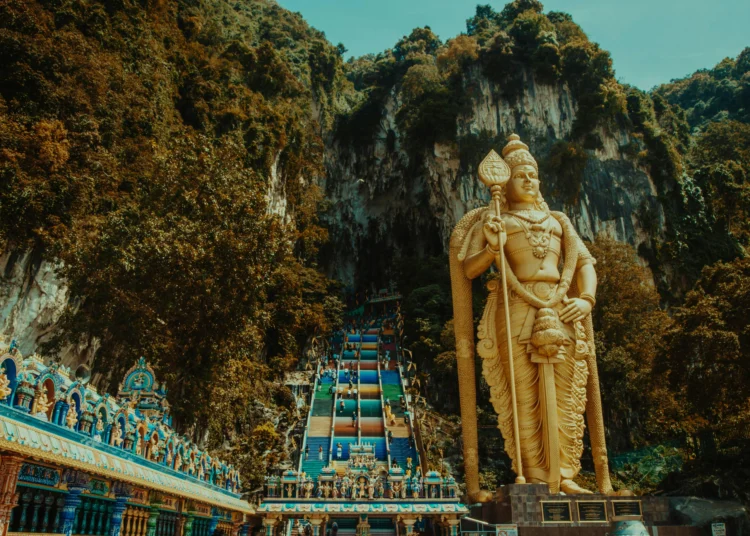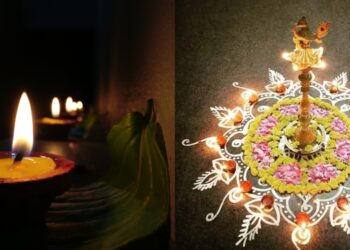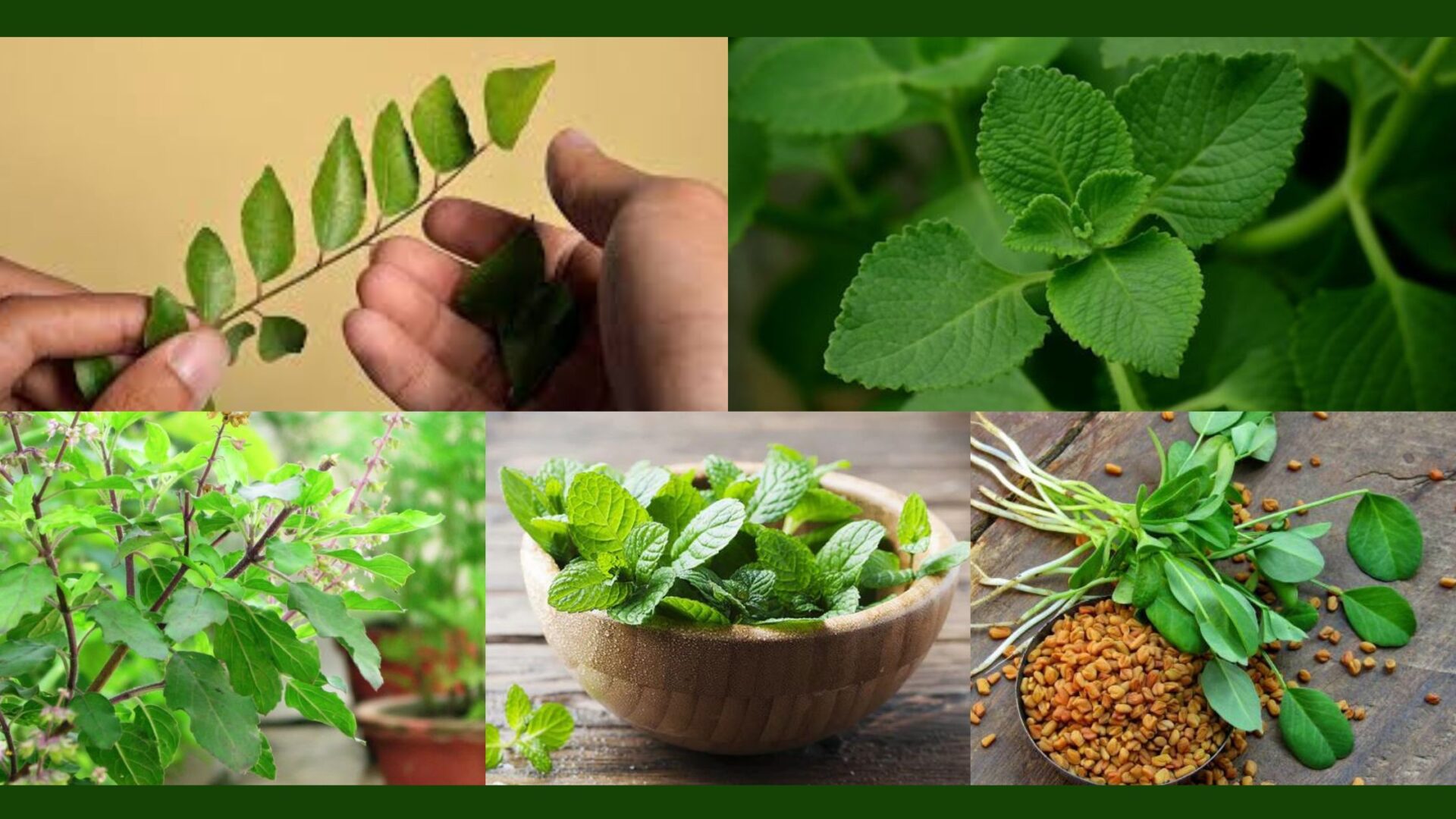Indian tradition has many amazing facts that the whole world must know. From food to fashion, festivals to culture, art to principles, everything related to Indian traditions is a marvel to this society. Kolam is one of those traditions of Indian culture that never fails to amaze people. Kolam is not just any form of art used for decorative or artistic purposes but it also has deep meaning and comes from a very long history.
By conventional definition, Kolam is defined as a form of traditional decorative art painted with rice powder following age-old conventions. It is also painted with white stone powder, chalk, or pastel powder, often accompanied by natural or synthetic pigments. But to understand the origin of Kolam, we need to travel at least 5,000 years to where it belongs, ancient Tamil Nadu, known as Tamilakam in India. Soon, this tradition spread to neighboring states and the art became famous since then until Kolam became known almost all over the world.
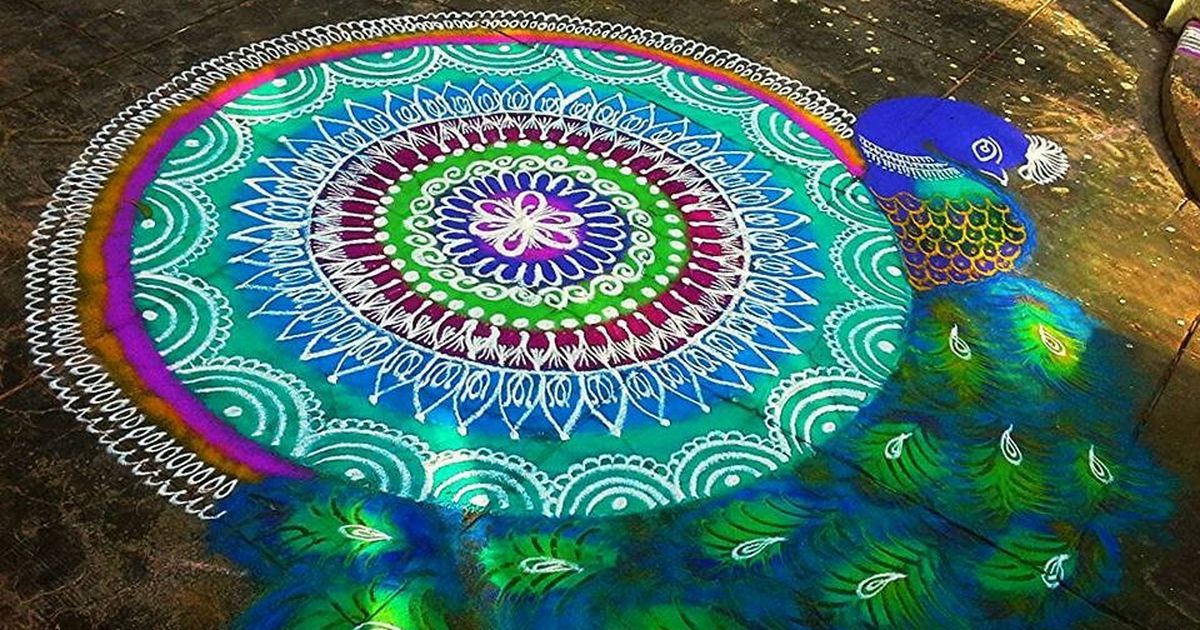
Another important historical fact about Kolam is that it was not only an art form traditionally painted on the floors of Indian houses but was also painted with coarse rice powder so that ants did not have to go too far for a meal. Rice flour also invites birds and other small creatures to eat, thus welcoming other creatures into your home and daily life is a tribute to harmonious coexistence.
It is a sign that invites everyone into the house, not the least of which is Lakshmi, the goddess of prosperity and wealth. Patterns range from geometric and mathematical designs around a matrix of dots to free-form artwork and closed shapes. Evolving folklore required completing the lines to symbolically prevent evil spirits from penetrating inside the shapes. So they cannot enter the house.
Beliefs
There are certain beliefs and rituals behind each Kolam creation. From the pride of being able to draw intircate patterns without lifting your hands from the ground to young women waiting for the Indian month of “Margali” to display their works on the road and cover a large circumference of the road is a tradition that continues to this day in India.
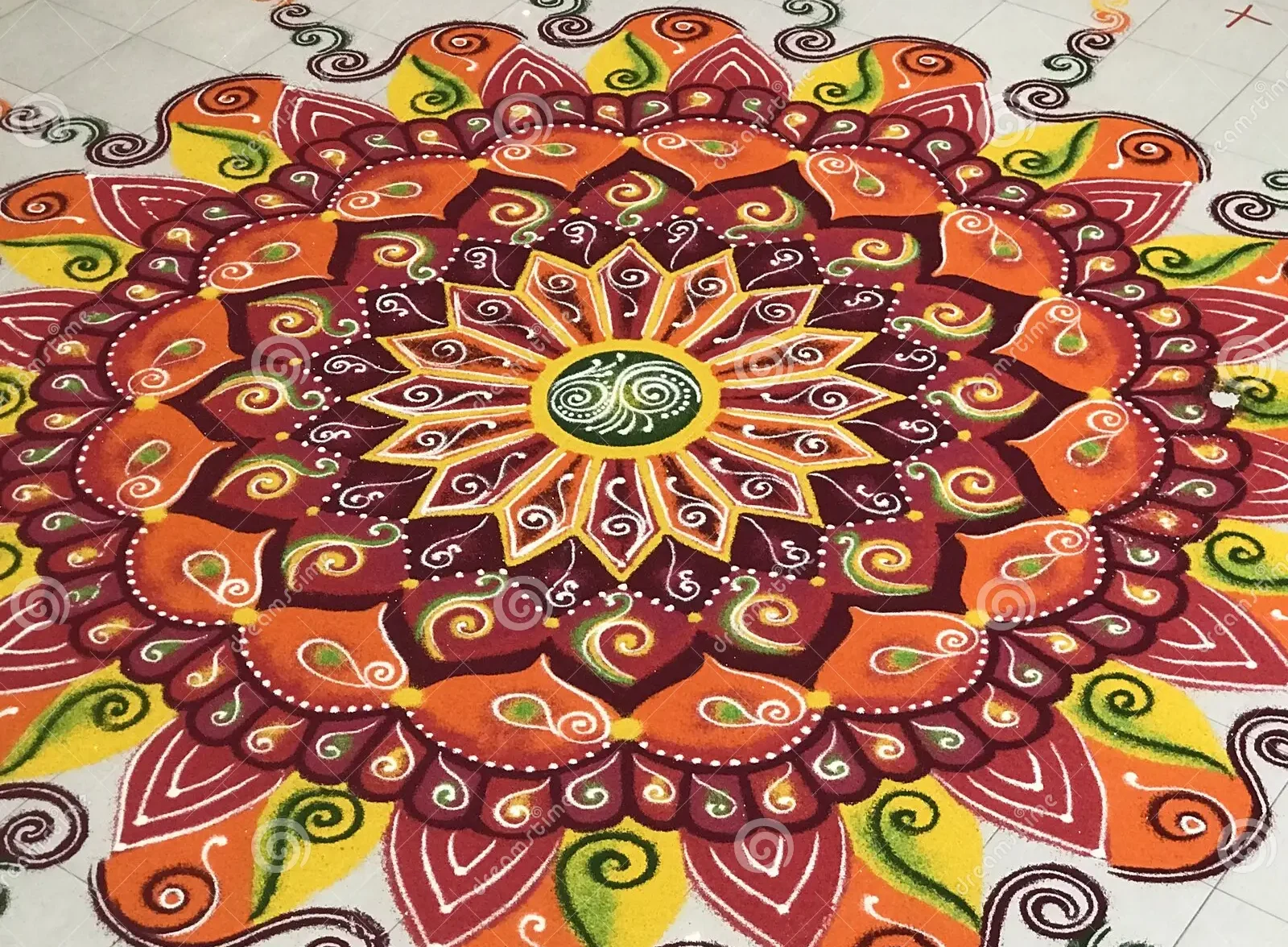
Do you know? Each Kolam design is rooted in magical motifs and abstract designs mixed with blended philosophical and religious motifs. Patterns may include fish, birds, and other animal images to symbolize the unity between humans and animals.
The sun, moon, and other zodiac symbols are also used. The downward-pointing triangle represents a women, an upward-facing triangle represents humans. The circle represents nature while the square represents culture. The lotus flower symbolizes the uterus. A pentagram represents Venus and the five elements. Specific Kolam designs are created only on special occasions like weddings and this is called the Ritual Kolam. These Kolam ritual patterns are passed down from generation to generation.
Designs
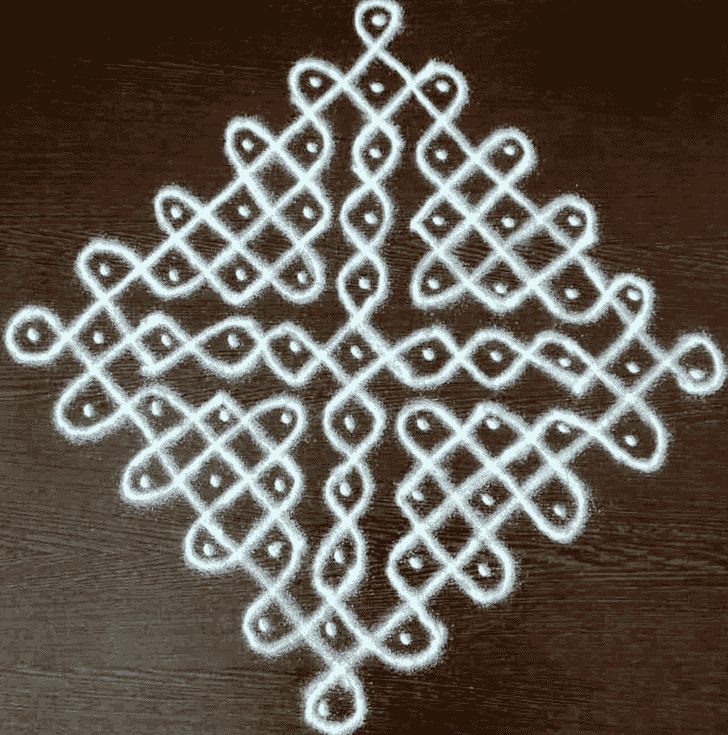
This is the line pattern used to draw Kolam in which is “neli”, “kambu”, “sikku”. The strokes run around each point and then return to the main point, and the strokes also have a known structure.
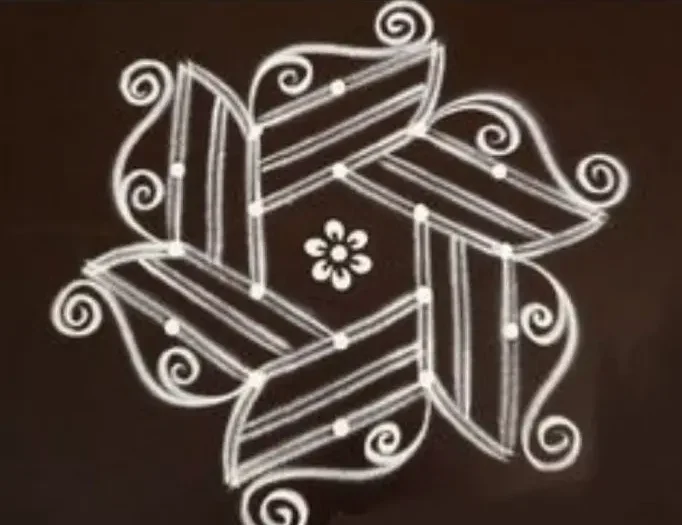
This Kolam pattern is is drawn using dot grid only. Most of the time, these patterns ends up becoming a complex pattern.
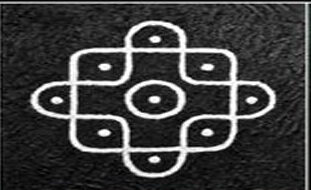
A Kolam pattern in which the path around around the points is incomplete but open
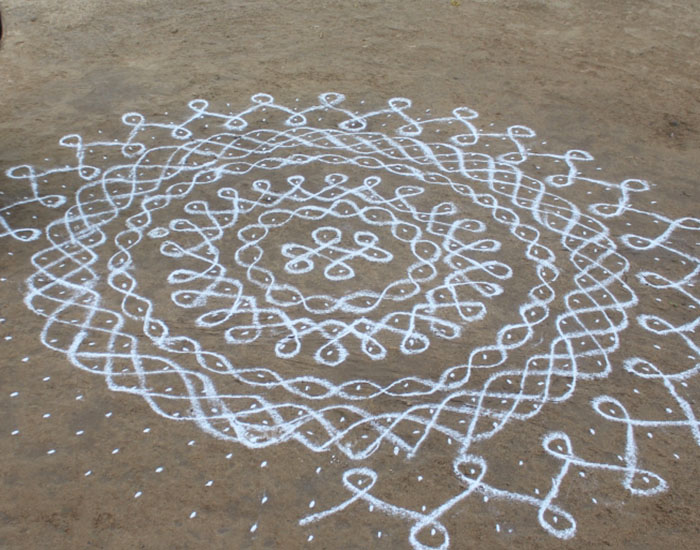
This Kolam design is pattern in which lines are connected between dots. Sometimes they represent various types of objects, flowers, or animals.
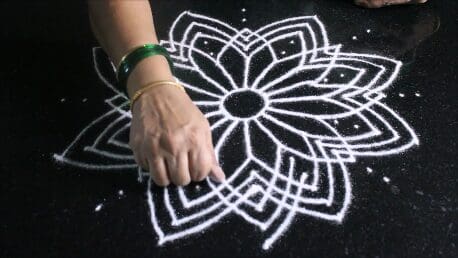
In this pattern, where the points are arranged in a radial direction, they are called lotus flowers.
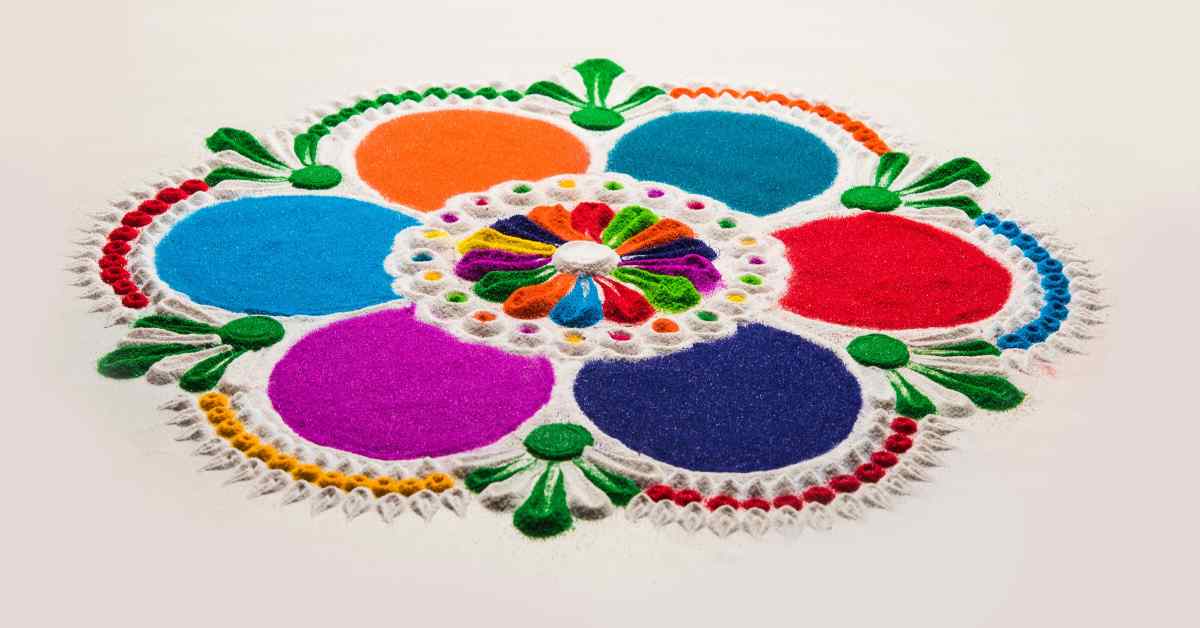
The final design is the Kolam drawn with loose patterns and mostly colors.
Source: Infopedia
Follow us on Instagram, Facebook or Telegram for more updates and breaking news.


